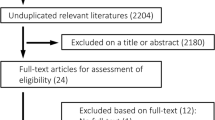Abstract
Purpose
The aim of the study was to identify and analyze non-modifiable risk factors for recurrence after a first-time post-traumatic dislocation of the shoulder in the entire Polish population.
Methods
The entire Polish population was included in a cohort study. Patients diagnosed with primary post-traumatic dislocation of the shoulder between January 1st, 2010 and December 31st, 2011 were identified and followed up from January 1st, 2010 to December 31st, 2014. Incidence and recurrence rates and odds ratios (OR) were calculated. Demographic data were obtained from Poland’s Central Statistical Office. Data on the number of patients with primary post-traumatic shoulder dislocation were drawn from the National Health Fund database.
Results
A total of 21,739 patients (14,466 males and 7273 females) with a primary shoulder dislocation in Poland were identified in 2010 and 2011. There were 3341 (15.4%) recurrences. Increased risk of recurrence was associated with male gender (OR = 1.92, 95% CI 1.76–2.09, p < 10−10) in the age range of 20–29 years (OR = 2.59, 95% CI 2.38–2.83, p < 10−10). The highest risk of first-time shoulder dislocation was revealed among females in the age group ≥ 80 years (OR = 24.1, 95% CI 22.6–25.7, p < 10−10). The risk of recurrence in the same group was significantly decreased (OR = 0.41, 95% CI 0.32–0.51, p < 10−10).
Conclusion
Male gender and age range 20–29 years are highest population risk factors for recurrence after primary shoulder dislocation. Female gender and age ≥ 80 years are highest risk factors for the first-time post-traumatic dislocation of the shoulder joint and protective factors for recurrences after the first-time shoulder dislocation.
Level of evidence
III.




Similar content being viewed by others
References
Aboalata M, Plath JE, Seppel G, Juretzko J, Vogt S, Imhoff AB (2017) Results of arthroscopic bankart repair for anterior-inferior shoulder instability at 13-year follow-up. Am J Sports Med 45:782–787
Bohu Y, Klouche S, Lefevre N, Peyrin JC, Dusfour B, Hager JP, Ribaut A, Herman S (2015) The epidemiology of 1345 shoulder dislocations and subluxations in French Rugby Union players: a five-season prospective study from 2008 to 2013. Br J Sports Med 49:1535–1540
Central Statistical Office of Poland, part of European Statistical System. https://bdl.stat.gov.pl/BDL/dane/Podgrup/wymiary. Accessed 1 Oct 2016
Flint JH, Pickett A, Owens BD, Svoboda SJ, Peck KY, Cameron KL, Biery J, Giuliani J, Rue JP (2018) Recurrent shoulder instability in a young, active, military population and its professional implications. Sports Health 10:54–59
Hovelius L, Rahme H (2016) Primary anterior dislocation of the shoulder: long-term prognosis at the age of 40 years or younger. Knee Surg Sports Traumatol Arthrosc 24:330–342
International Statistical Classification of Diseases and Related Health Problems, ICD-10 (2009) World Health Organization. https://www.csioz.gov.pl/interoperacyjnosc/klasyfikacje/. Accessed 5 Sept 2016
Kardouni JR, McKinnon CJ, Seitz AL (2016) Incidence of shoulder dislocations and the rate of recurrent instability in soldiers. Med Sci Sports Exerc 48:2150–2156
Kraeutler MJ, Currie DW, Kerr ZY, Roos KG, McCarty EC, Comstock RD (2018) Epidemiology of shoulder dislocations in high school and collegiate athletics in the United States: 2004/2005 through 2013/2014. Sports Health 10:85–91
Kralinger FS, Golser K, Wischatta R, Wambacher M, Sperner G (2002) Predicting recurrence after primary anterior shoulder dislocation. Am J Sports Med 30:116–120
Krøner K, Lind T, Jensen J (1989) The epidemiology of shoulder dislocations. Arch Orthop Trauma Surg 108:288–290
Leroux T, Wasserstein D, Veillette C, Khoshbin A, Henry P, Chahal J, Austin P, Mahomed N, Ogilvie-Harris D (2014) Epidemiology of primary anterior shoulder dislocation requiring closed reduction in Ontario, Canada. Am J Sports Med 42:442–450
Liavaag S, Svenningsen S, Reikerås O, Enger M, Fjalestad T, Pripp AH, Brox JI (2011) The epidemiology of shoulder dislocations in Oslo. Scand J Med Sci Sports 21:334–340
Olds M, Ellis R, Donaldson K, Parmar P, Kersten P (2015) Risk factors which predispose first-time traumatic anterior shoulder dislocations to recurrent instability in adults: a systematic review and meta-analysis. Br J Sports Med 49:913–922
Owens BD, Campbell SE, Cameron KL (2014) Risk factors for anterior glenohumeral instability. Am J Sports Med 35:1168–1173
Pevny T, Hunter RE, Freeman JR (1998) Primary traumatic anterior shoulder dislocation in patients 40 years of age and older. Arthroscopy 14:289–294
Polish National Health Found (2016) http://www.nfz.gov.pl/. Accessed 5 Sept 2016
Robinson TW, Corlette J, Collins CL, Comstock RD (2014) Shoulder injuries among US high school athletes, 2005/2006–2011/2012. Pediatrics 133:272–279
Robinson CM, Kelly M, Wakefield AE (2002) Redislocation of the shoulder during the first six weeks after a primary anterior dislocation: risk factors and results of treatment. J Bone Joint Surg Am 84:1552–1559
Sachs RA, Lin D, Stone ML, Paxton E, Kuney M (2007) Can the need for future surgery for acute traumatic anterior shoulder dislocation be predicted? J Bone Joint Surg Am 89:1665–1674
Simonet WT, Melton LJ 3rd, Cofield RH, Ilstrup DM (1984) Incidence of anterior shoulder dislocation in Olmsted County, Minnesota. Clin Orthop Relat Res 186:186–191
teSlaa RL, Brand R, Marti RK (2003) A prospective arthroscopic study of acute first-time anterior shoulder dislocation in the young: a five-year follow-up study. J Shoulder Elbow Surg 12:529–534
Vermeiren J, Handelberg F, Casteleyn PP, Opdecam P (1993) The rate of recurrence of traumatic anterior dislocation of the shoulder. A study of 154 cases and a review of the literature. Int Orthop 17:337–341
Funding
All authors declare that they have nothing to disclose.
Author information
Authors and Affiliations
Corresponding author
Ethics declarations
Conflict of interest
All authors declare that they have no conflict of interest.
Ethical approval
This study was approved by the Institutional Ethics Committee of the District Hospital of Orthopedics and Trauma Surgery, Piekary Slaskie, Poland.
Rights and permissions
About this article
Cite this article
Szyluk, K., Jasiński, A., Niemiec, P. et al. Male gender and age range 20–29 years are the most important non-modifiable risk factors for recurrence after primary post-traumatic shoulder dislocation. Knee Surg Sports Traumatol Arthrosc 26, 2454–2464 (2018). https://doi.org/10.1007/s00167-018-4924-4
Received:
Accepted:
Published:
Issue Date:
DOI: https://doi.org/10.1007/s00167-018-4924-4




